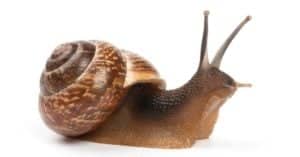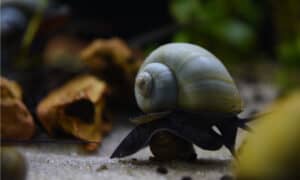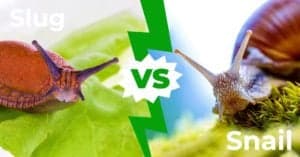Sea snails are commonly known sea creatures that reside in salt or brackish water, most often in intertidal pools. “Sea snail” is a common name, however, and many different species of marine gastropod mollusks exist. Within the diversity of the “sea snail” tree, there are thousands of varieties, all with their own diets, appearances, and ecological niches. Let’s look through some of the most common sea snail species and learn: What do sea snails eat?
What do sea snails eat?
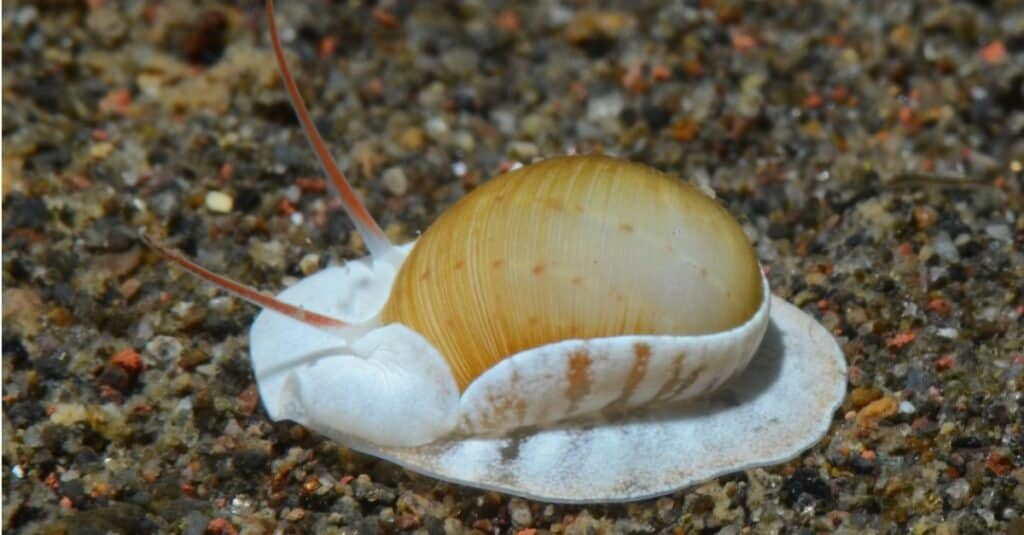
Sea
snails
eat mostly algae, but carnivorous snails will eat fish, snails, worms, and mollusks.
©iStock.com/Giorgio Cavallaro
Sea snails eat algae, small fish, other snails, seaweed, worms, barnacles, and other mollusks.
Snails are incredibly diverse eaters and are known to eat pretty much anything they can slide up to. Most species of sea snail are herbivorous, meaning they eat plant matter. However, there are certain species that occupy a more scavenger-oriented niche, with some species even hunting their own food with poison darts.
When it comes to herbivorous sea snails, algae and seaweed are going to be the most common foods. They slowly move around the intertidal pools and cut off pieces of plant matter, swallowing into their tiny esophagus and moving on to new locations.
Carnivorous sea snails will often prey on living animals. Some of their favorite foods include bivalves like mussels and clams, small fish, sea slugs, other sea snails, and worms. Their method for hunting varies wildly from species to species.
Other sea snails solely feed on carrion or a mixture of carrion and plants. Carrion is essentially any dead organic material like a fish or slug. When that animal dies, snails will often smell the rotting carcass and feed on it for hours at a time. Aside from other animals, these scavenger snails will eat rotting plant material and are often used in home fish tanks as cleaners.
A list of the common foods that sea snails eat
Sea snails come in all shapes and sizes, but here are their most common foods:
- algae
- seaweed
- cord grass
- biofilm
- rotting plants
- small fish
- carrion (decomposing animals)
- worms
- barnacles
- clams
- oysters
- scallops
- other snails
- sea slugs
What are the common types of sea snails?
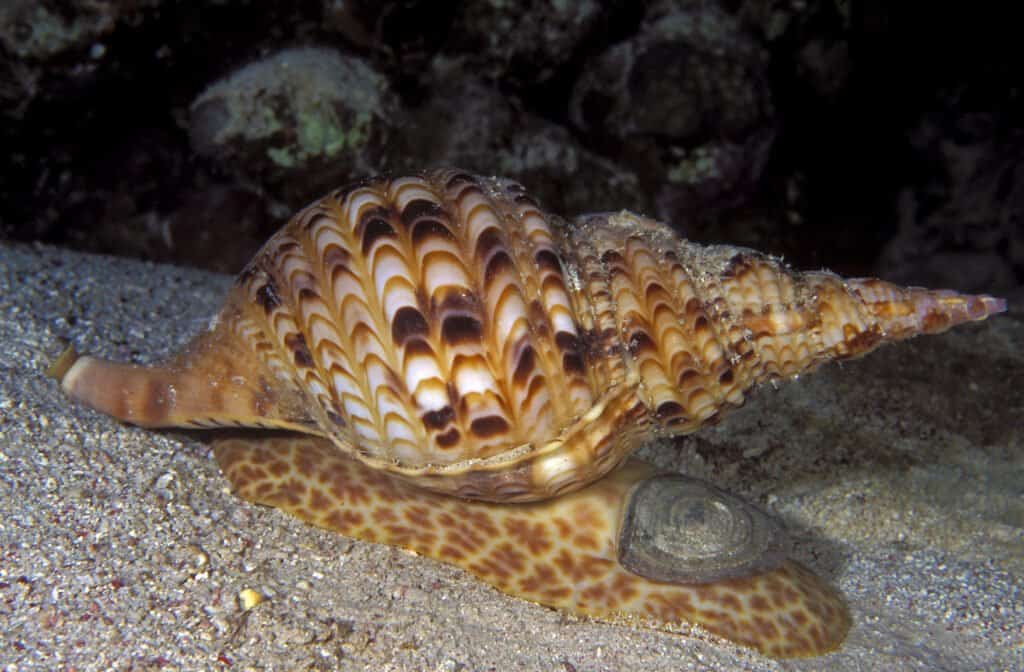
Sea snails are found everywhere and their diet reflects their ecological niche.
©zaferkizilkaya/Shutterstock.com
There are thousands of species within the commonly used name “sea snails.” Let’s look at a few of the most common and/or interesting species around the earth.
When many people think of sea snails, they imagine periwinkles. Periwinkles live all along the Atlantic ocean and can be found almost anywhere there are rocks and water. They are small snails that have been used for food and fish bait for thousands of years. They are often split into two groups, the common periwinkle and the small periwinkle.
Whelk is a common name used to describe many sea snails, but “true whelks” are carnivorous snails that hunt worms and mollusks. They have been used for food and are often sold in markets around the world. Some species are used to produce a red dye called Tyrian purple that is known for its depth of color.
Cowrie snails are small mollusks that are often found on the beaches while playing in the sand. They have a flat shape with a small jagged line down the center. Cowrie shells were used as currency in some parts of the world and today is used as jewelry.
Cone snails are among the most interesting snails on the list. Cones are carnivorous snails that actively hunt their prey with venomous spikes. Their shells are typically very colorful and, when bothered by humans, will shoot a hypodermic needle into the offender. This dart is venomous and is so powerful it can be fatal to humans if untreated. Today, their venom is proving important in certain medical situations. Currently, their venom is being used as a better form of insulin that acts within five minutes, as well as pain killers.
How do sea snails get their food?

Cone snails are some of the most venomous creatures on the planet.
©iStock.com/lilithlita
Herbivorous snails gather their food using a radula (tiny sharp teeth) and scarping rocks clean as they move. They will scrape algae, cut plants, and turn material into bite-sized bits that they can process and digest. Almost all snails have some form of radula, though many species have adapted it to perform specific things. Cowries, limpets, and periwinkles mostly use this method of gathering food.
Carnivorous snails use various methods for hunting their prey.
Whelks are avid hunters and can sense their prey using chemical signals from a surprising distance. They typically eat clams, mussels, and barnacles, but have a unique way of getting into the hard outer shells of their prey. Using a modified proboscis (a thin drill that extends from their head), they are able to physically bore a hole through most shells and suck out the nutrients from inside. Whelks also use this drill to attack other prey as long as it’s slow-moving or stationary (such as a fish stuck in a net).
Moon snails will hide in the sand and wait for their prey to come too close. Once it does, they will use their body and blanket their prey, hoping to suffocate it. If that doesn’t work, they will use their own proboscis to drill into their prey, killing it and sucking out their organs.
Cone snails are probably the most interesting hunters and are quite active in their approach to feeding. These snails have what’s essentially a modified proboscis that is barbed and as sharp as a hypodermic needle. It’s also tipped with venom that, depending on the species, can even be deadly. When the snail notices that its prey is near, it extends the proboscis and waits. Once the prey is in range, it contracts its muscles and fires a tooth like a dart, hitting the target and injecting the venom. In most fish, the venom immediately paralyzes it and stops it from feeling pain.
The snail then moves to the target and eats all the parts that it can digest, spitting out the hard stuff. There are a few species that are dangerous to humans, and there have been recorded deaths from accidental handling of these animals.
The photo featured at the top of this post is © iStock.com/scubaluna
Thank you for reading! Have some feedback for us? Contact the AZ Animals editorial team.




